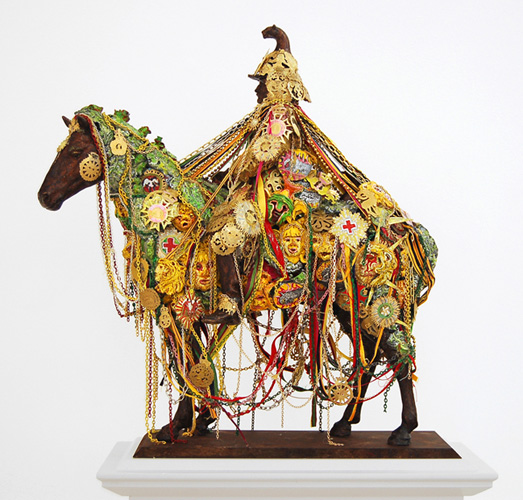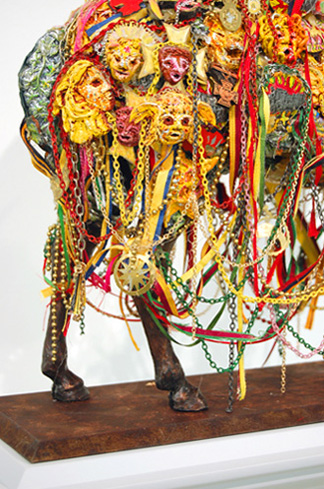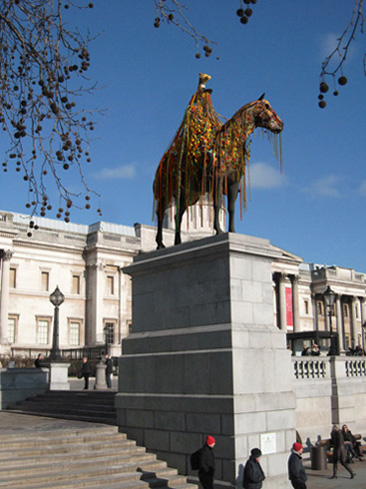| Homepage | ||
| Contact | ||
| CV & Links | ||
| Shop | ||
| Artwork by year :- | Artwork by theme :- | |
| 2020 - 22 | About Statues | |
| 2019 | Architecture | |
| 2018 | Boats | |
| 2017 | Cardboard | |
| 2016 | Coats of Arms | |
| 2015 | Finance & Trade | |
| 2014 | Public Artwork | |
| 2013 | Royalty | |
| 2012 | Soldiers | |
| 2011 | Treasury | |
| 2010 | ||
| 2005 - 2009 | ||
| 2000 - 2004 | ||
| 1992 - 1999 |
| HEW LOCKE | ||||
|
Photo by Stuart Morrison, courtesy Hales Gallery 2010 |
||||
Shortlisted proposal for the Fourth Plinth, Trafalgar Square "I’ve become a completely obsessed statue-spotter in recent years. When travelling around Britain, the first things I’m looking for are the statues - where they are and who they are of. I often think ‘why have they got a statue to this person and why to that person?’ I’m fascinated by how bombastic some of these things are; they're above us, looking down at us mere mortals. Yet on a purely aesthetic level I often find these historical monuments beautiful and have a genuine respect for their skilled academic sculptors. I have a somewhat schizophrenic response. It is not an anti-military critique, but an investigation into the idea of the Hero, and a meditation on our relationship with monumental public sculpture. Our numerous memorials dissolve in to the streetscape. I want Londoners to notice again all the statues so familiar they are invisible" - Hew Locke The empty fourth plinth was originally designed to receive an equestrian bronze: 170 years later Locke proposed to fulfill that original ambition. A replica of the statue in Portland Place of Field Marshal Sir George White (1835 - 1912) would have been transformed into an object of veneration, decorated with horse-brasses, trade-beads, medals, weapons, trophies, jewels, old mess tins, etc. The layers of material and meaning have multiple possible readings, pointing to the far-reaching effects of our interactions, whether in military terms, trade or culture. Sir George saw action in the Indian Mutiny, the Second Afghan War (winning the VC for actions in Khandahar), the Nile Expedition, the Burmese War and the Second Boer War. Sikandar engages with the contemporary legacy of British 19th century history and the recurrent cycles of history. 'Sikandar' is the Urdu version of ‘Alexander’. Khandahar is one of the cities Alexander the Great named after himself as he fought through Afghanistan. Here he married Roxana, and fought rebellion in the Swat valley. He is the measure against which generals to this day compare themselves, and at this moment somewhere a member of our troops is reading his history. Alexander's military empire was short-lived, but his Hellenic cultural influence lasted centuries. The Punjabi proverb "jit jit key jung, secunder jay haar" translates as "Alexander wins so many battles that he loses the war". It is used to address anyone who is good at winning but never takes advantage of those wins.
|


